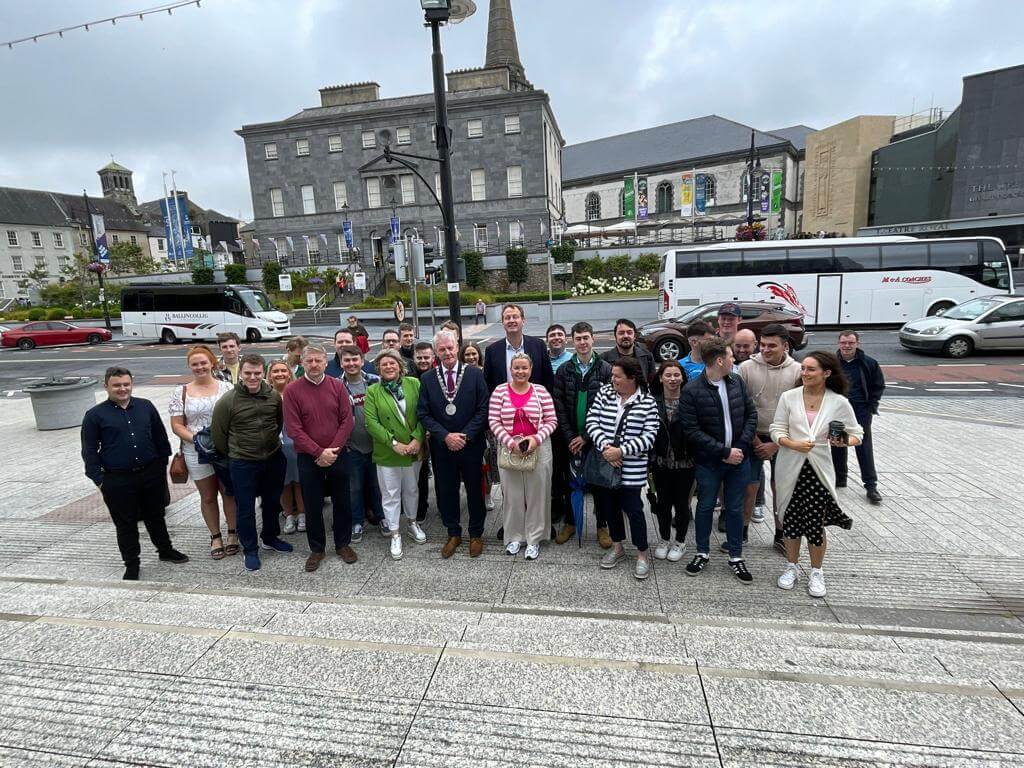Jim O’Callaghan TD
Waterford Ógra Summer School
24 July 2022
Preliminary
I want to thank the Cathaoirleach of Ógra Waterford for inviting me to give this address this morning. This is the second time I have been in Waterford in recent weeks, having attended earlier this month the funeral of Councillor James Tobin. That was a very sad occasion but it gave me an insight into the affection and support that Waterford people give to those elected representatives who serve them well.
Today is a happier occasion and I am very honoured to give this address which seeks to honour the Irish Tricolour that was first flown in Waterford by Thomas Francis Meagher from the headquarters of the Wolfe Tone Confederate Club at 33 The Mall during the 1848 Rebellion. This Summer School wants to focus on the inclusiveness and diversity of Irish Republicanism, as symbolised by its flag.
In order to appreciate this inclusivity and diversity we need to reflect on the important decision that Meagher made in 1843 when he decided to join the Young Irelanders. This group of young radicals expressed their Republicanism through the newspaper they published called “The Nation”. The people behind this newspaper were Thomas Davis, a Cork protestant; John Blake Dillon, a Mayo Catholic; Charles Gavin Duffy, a Northern Catholic and subsequently John Mitchell, a Unitarian Minister. Along with Meagher they represented the diversity of Ireland in the mid 19th century, and they were united in their desire to end the oppression of Irish Catholics and the governance of Ireland from Westminster. Although such a group of men may not be viewed today as diverse, the breadth of their backgrounds and the elevation of their political beliefs above their religious or personal interests was a real mark of diversity in mid-19th century Ireland.
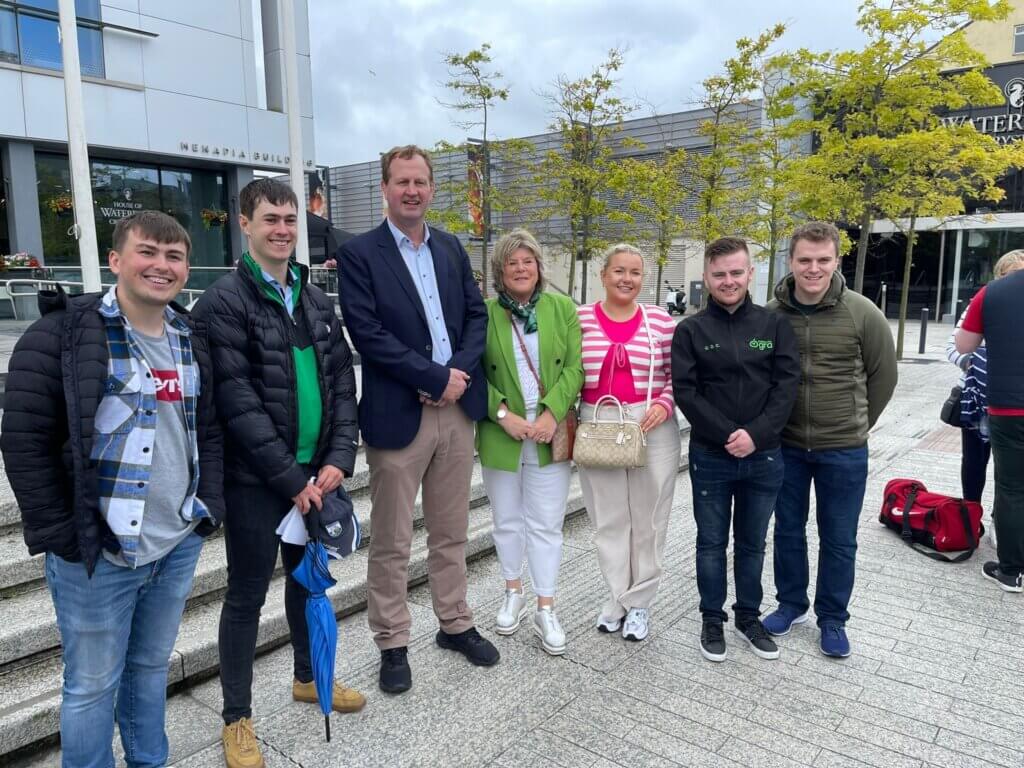
Receiving the Tricolour
In January 1847 Meagher helped inaugurate the Young Ireland Confederation which resulted in many Confederate Clubs being established throughout Ireland to encourage political debate. At the end of March 1848 Meagher, William Smith O’Brien, John Blake Dillon and others traveled to France for the purpose of gaining support from Alphonse de Lamartine, head of the Provisional Government of the Second French Republic. This was the French Republic that abolished slavery in its Territories and established universal male suffrage. Unfortunately, the revolutionary promise of the second French Republic was of little help to those who sought an Irish Republic. Having praised the Irish people, the French politician informed the Irishmen that nothing could be done by France since Ireland was an internal British question. Meagher and the others went home disconsolate but with one remarkable gift. A committee of French woman presented Meagher with a tricolour in Ireland’s colours: orange, green and white. When Meagher subsequently brought it to a meeting of the Confederation John Mitchell allegedly said: “I hope to see that flag one day waving as our national banner”.
On 7 March 1848 Meagher flew it for the first time from 33 The Mall in Waterford. It is important to recall what that flag stood for and why it was presented to and chosen by Young Irelanders. The tricolour he brought back was orange, green and white because green represented Ireland’s Catholics; orange represented Ireland’s Protestants and white represented the unification of them. In April that year Meagher stated: “The white in the centre signifies a lasting truce between Orange and Green and I trust that beneath its folds the hands of Irish Protestants and Irish Catholics may be clasped in generous and heroic brotherhood.”
That was the flag that became the flag of revolutionary Ireland and that was flown during the Rising of 1916. It came to be accepted by the people of Ireland as their national flag. In the Irish Free State it was used officially as the flag of the State and in 1937 Article 7 of the new Constitution stated that “The national flag is the tricolour of Green, White and Orange”.
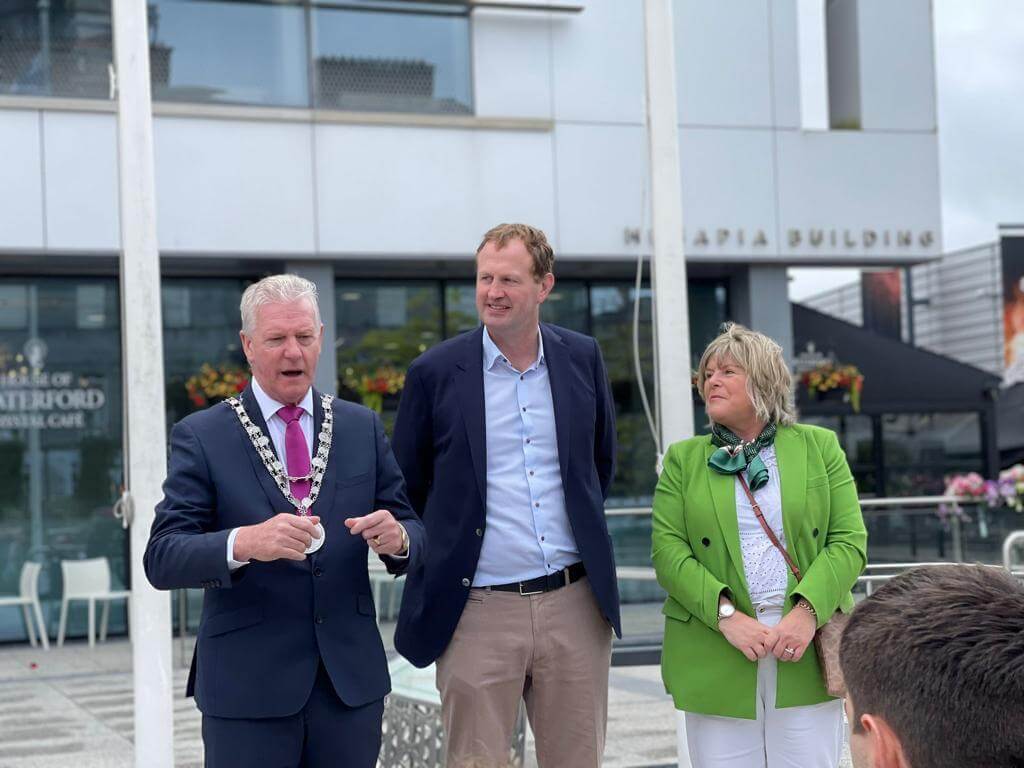
Understanding the Tricolour
We should never lose sight of the fact that the Republican cause in Ireland was founded on the desire to unite Irish people and thus to empower them to govern themselves. These were the objectives that motivated the United Irishmen. It was Belfast’s Samuel Neilson who in early 1791 established the Northern Star newspaper and who along with Belfast Doctor William Drennan sought to establish the Independence of Ireland as a Republic in which all citizens would be treated equally. They were the Belfast Radicals and their cause was complimented by similarly minded people in Dublin, led by Wolfe Tone. They all identified themselves as the Society of United Irishmen. This was not a movement that sought the repeal of the penal laws on simple grounds of Catholic self-interest. It was a diverse movement of people from different religious and geographical backgrounds that wanted to emulate what had been achieved through the establishment of a Republic in France. Although the 1798 Rebellion had failed militarily, it did inspire the cause of Irish Republicans throughout the 19th century.
Between the time that Meagher raised the flag in 1848 and today there have been many occasions when the cause of Irish Republicanism has been misrepresented and indeed debased as a narrow, sectarian, exclusively Catholic enterprise. Regrettably, that is the perception that many in Northern Ireland have, inspired in part because of the violence perpetrated in its name in the latter part of the 20th century. Nonetheless, that should not obscure its true meaning. Nor should it obscure its ability to convey a symbolic message of unity as it sought to do back in 1848.
Diversity and the Tricolour
The traditional definition of Republicanism can be identified in the rallying cry of France’s Liberté, Égalité, Fraternité. A constituent part of modern equality, however, is diversity. Traditionally, equality was viewed exclusively as meaning that people would not be discriminated against or excluded from doing what an appropriate comparator was permitted to do. In our modern society diversity means that all groups within our society play a participating role. It is not simply a case of all groups being equal but rather that such equality is only really present when there is diversity within each part of the State.
In Ireland in the 21st century it means that the important institutions of State should reflect the society that they serve. Traditionally, Ireland, like other countries, was not concerned about its government reflecting the diversity of its society. That was because of the dominance exercised by those who governed Ireland both before and immediately after independence. When Ireland was a colonised country it was subject to the oppressive control of those who represented the interests of the colonial power and its state religion. When Ireland was an independent country its early governments became too subservient to the interests of the Catholic Church. When Northern Ireland was established its governments’ clear political objective was to retain Protestant hegemony within its jurisdiction.
In all of these eras most of the important functions and roles were filled by very similar people who served the political objective of the governing powers. Nonetheless, modern societies require more. The dominant control of any one political ideology is gone. Societies should now be governed by those who take into account the diversity of modern societies. This requires that those who occupy important roles and functions reflect and represent the diversity of the society in which they operate.
In many ways the Irish tricolour was a precursor of the rainbow flag since it is a symbol of inclusivity and liberation. That flag is as much the property of all the people of Northern Ireland as it is of Ireland. Although this State in its early years afforded too much deference and control to the Catholic Church, it has now become a society in which no religion is given preferential treatment and those of no religion are treated the same as those who profess a faith.
Explaining the Tricolour
Why then is this flag of diversity and inclusivity viewed with such negativity by a large section of people who live on this island, namely those whose allegiance is to maintaining the union with Great Britain. The most obvious reason is that those who support the union view the flag as representing a political viewpoint that they oppose and which would see an end to that union. However, an opposing political viewpoint should not arouse the hatred or the animosity or the desire to burn a flag on bonfires along with effigies of those who support its political objectives, as is frequently seen in Northern Ireland. The actual reason, unfortunately, is that politics in Northern Ireland has been defined, both before and after partition, by the contest between green and orange rather than the strength that derives from the combination of green and orange. If an objective person from outside the island of Ireland was asked to design a flag that sought to bring together green and orange on this island there could be no more obvious product than our national flag. Nonetheless, its association in the mind of Unionism with a threat to its political existence and its association with violence in the latter part of the 20th century has had long-term and potentially irreparable consequences for the flag in the mind of unionism. But their assessment of the flag is wrong, just as the assessment of the flag by those who used it as justification for sectarian violence is wrong.
Reunifying Diversity
Invariably when people discuss a United Ireland they resort immediately to questions about what flag, what anthem, what symbol. Although these are symbolically important they are not consequential for people’s lives.
The reason why there should be Irish reunification is because it will enable all the people of this island to prosper economically, culturally and socially in a new political entity that will inevitably provide greater and broader opportunities for young people.
Irish Reunification is not an objective in itself. There is nothing to be grained by rectifying what many view as a historical wrong. What is worth achieving, however, is a country that recognises and cherishes the diversity of its people. It would be extraordinary, remarkable and inspiring if two post-colonial jurisdictions, divided by imperial design, were able, notwithstanding their anachronistic divisions, to reunify in order to enhance and promote their diversity. The partitions that occurred in the 20th century in post-colonial contexts – India, Ireland, Palestine – all arose, in part, as a result of an imperial belief that natives could not govern themselves once Britain departed. It would be an astonishing promotion of diversity if Ireland could show that this legacy of empire no longer subsisted on this island, and if peoples who divided because of their religious and cultural differences decided to reunify because of the richness and wealth of that diversity that was previously viewed as a threat but was in fact their greatest asset.
